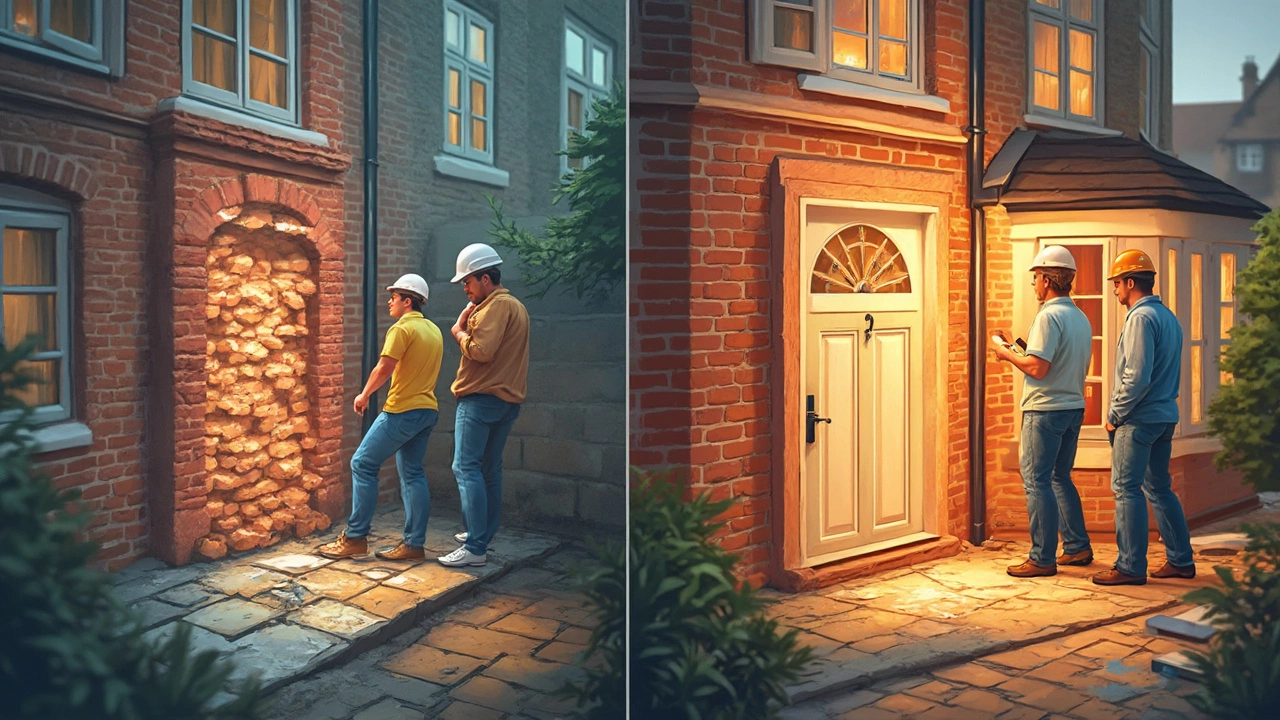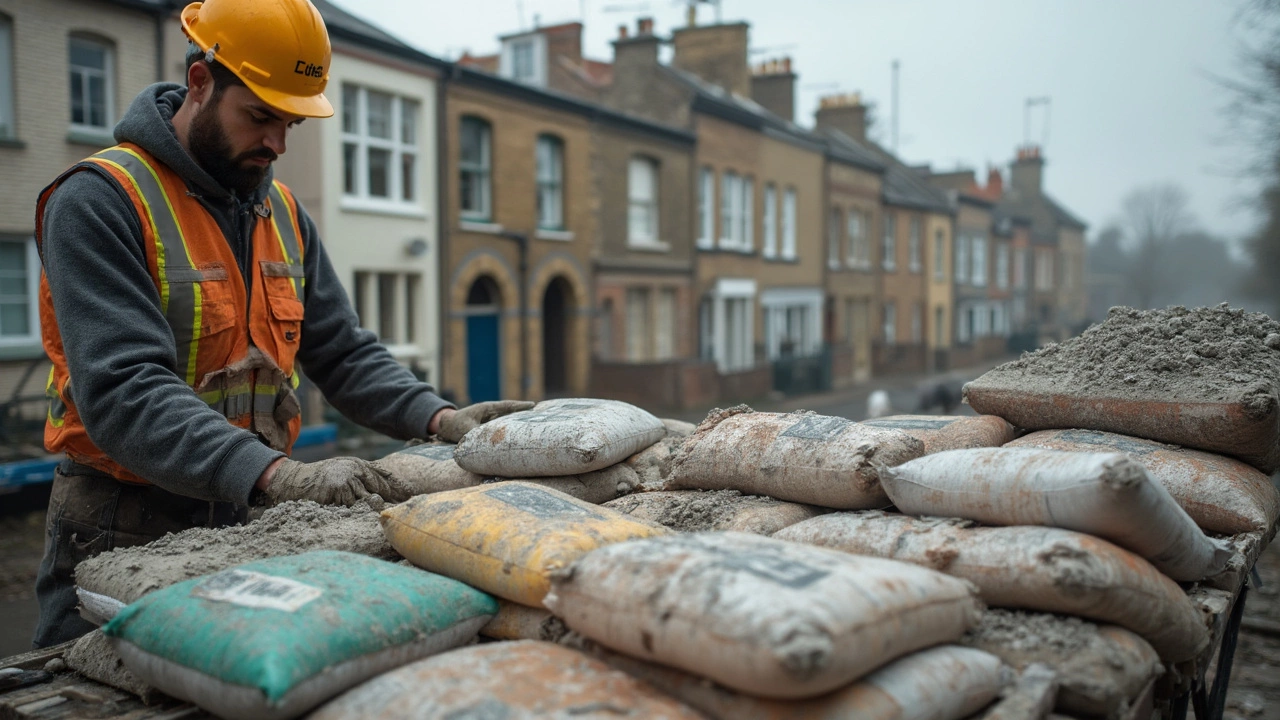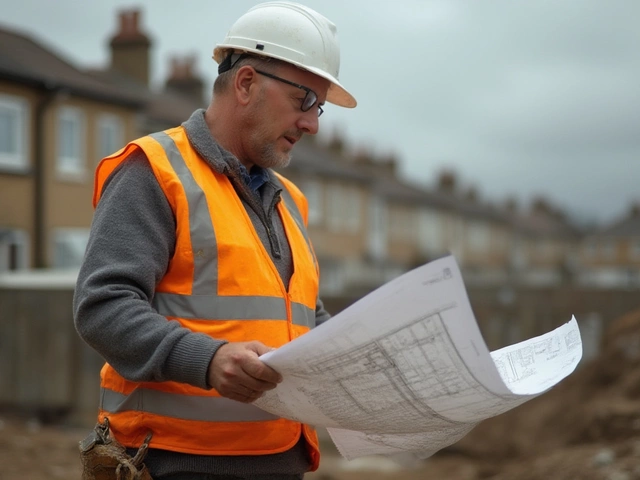If you’ve spotted cracks in your foundation, don’t panic—but don’t grab just any bag of cement, either. Using the wrong product can actually make things worse, leaving you with bigger bills down the road. Cement isn’t one-size-fits-all for foundation repair. Different types hold up better in certain situations, like sealing small hairline cracks versus patching big chunks.
Are you thinking, ‘Cement is cement, right?’ Not exactly. Some mixes bond better, some are better for waterproofing, and a few set fast enough you barely have time to blink—while others give you more wiggle room. The trick is knowing what your foundation actually needs before you start mixing. If you pick the wrong kind, cracks can come back or get even bigger, which is nobody’s idea of a win.
Knowing a bit about the types of cement used in foundation repair saves money and a lot of headaches. Want to know the secret sauce pros use? Keep scrolling—you’ll find the real deal here, not just whatever your local big box store happens to have on the shelf.
- Why Cement Choice Matters for Foundations
- Types of Cement Used for Foundation Repair
- How Pros Pick the Right Cement
- Smart Tips for a Solid Foundation Fix
Why Cement Choice Matters for Foundations
When it comes to foundation repair, the cement you choose isn’t just about mixing powder and water. It can affect how long your patch job lasts and whether you end up fixing that same crack over and over. The wrong cement mix can cause problems like poor bonding, quick cracking, weak support, or even moisture working its way in behind your repair.
What most people don’t realize: the soil under your foundation moves more than you think—especially after heavy rains or a hot, dry summer. This makes foundation cracks almost inevitable over time. Using a cement designed to handle these small shifts can mean the difference between a fix that lasts for decades and a DIY headache that needs patching every year.
Concrete and cement aren’t the same thing. Cement is just one ingredient in concrete—the part that binds it all together. But for foundation repair, specific types like hydraulic cement or polymer-modified cement are favorites. Why? Because they expand as they set, which helps seal up cracks tighter than basic mixes from the hardware aisle.
Here’s how mistakes with cement choice play out in the real world. A 2020 survey from the Foundation Repair Association found that nearly 60% of callback jobs were due to choosing the wrong cement product for the situation.
“The best cement for foundation repair is one that matches the conditions of the job—there’s no single cure-all,” says Michael Turner, structural engineer and board member of the American Concrete Institute.
Moisture is a big deal, too. If you live somewhere with heavy rainfall or lots of groundwater, you need cement with strong water resistance. Waterproofing or hydraulic cements can plug active leaks right away and stand up to pressure, while standard types can literally crumble over time with too much moisture exposure.
Bottom line: the best cement for foundation repair depends on your climate, the size of your cracks, and if water’s involved. Picking the right product from the start means fewer surprises later—and a foundation that actually stays solid.
| Factor | Why It Matters |
|---|---|
| Climate | More rain or freeze-thaw cycles need tougher, waterproof cement |
| Crack Size | Bigger cracks may need stronger bonding or extra flexibility |
| Soil Type | Expansive or shifting soil calls for higher-strength repair |
Types of Cement Used for Foundation Repair
Not every crack or hole needs the same fix. Choosing the right cement seriously affects whether your repair actually holds up. Let’s break down some common types used in foundation repair, and how each one stacks up.
Hydraulic Cement: This stuff is a go-to when you need a quick solution, especially if water is seeping into your basement. It expands slightly as it cures, closing up gaps you can’t even see. Plumbers and pros use hydraulic cement around pipes, holes, and cracks where water loves to sneak in. It sets crazy fast—sometimes in less than five minutes—so you have to work quickly. It’s best for patching up small leaks and filling hairline cracks.
Polymer-Modified Cement: Here’s where things get a bit high-tech. This cement has special polymers mixed in, which boost its stickiness and flexibility. That helps it hold on tight to old concrete, even if the foundation shifts a bit. It’s awesome for bigger patches and areas that get a lot of vibration or movement, like garage floors or the edges of slabs. You’ll find it in lots of pro-level crack repair kits for good reason.
Epoxy Resin: Now, technically this isn’t your classic concrete or cement. But you’ll find a lot of pros reaching for epoxy when dealing with tight, non-moving cracks in foundations. It bonds stronger than the surrounding concrete and keeps water out for good. The catch? It’s not a cure-all—epoxy works only if the crack doesn’t get bigger over time.
Ready-Mix Concrete: For big repairs, like rebuilding chunks of a wall or footing, nothing beats traditional ready-mix. Made from cement, gravel, and sand, these mixes are strong, cheap, and available everywhere. If you’re filling large breaks or doing structural repairs, this is where you go.
Quick look at the main types and their uses:
| Type | Best For | Sets In |
|---|---|---|
| Hydraulic Cement | Leaking cracks, holes, quick patches | 3–5 mins |
| Polymer-Modified Cement | Flexible/large repairs, movement areas | 1–2 hrs |
| Epoxy Resin | Hairline, non-moving cracks | 4–6 hrs |
| Ready-Mix Concrete | Large repairs, rebuilding, structural fixes | 6–10 hrs |
No single product is perfect for all foundation issues; the type of cement to use depends on the size and cause of the crack, plus whether water’s involved. If you’re not sure what you’re dealing with, take a photo and ask a local pro or building supply store—they’ve seen it all before.

How Pros Pick the Right Cement
When it comes to foundation repair, experienced contractors don’t just grab the cheapest mix they spot. They match the product to the job—and that’s what makes repairs last. The stakes are high because the wrong cement can crumble, crack, or fail to bond properly, turning a quick fix into a big problem.
First thing, pros check what kind of issue they’re facing. Is it a hairline crack, a wide gap, or a nasty chunk missing? Tiny cracks usually get filled with hydraulic cement. This stuff expands as it cures, making it a solid bet for blocking water and sealing leaks. For bigger gaps or where structural stability matters, contractors often use a high-strength, fiber-reinforced concrete mix. It’s not just strong, but it flexes a bit—useful when soil shifts underneath the house.
Water matters, too. If you’ve got a basement that’s always damp, pros reach for concrete types with built-in waterproofers or additives. That extra layer keeps moisture out and helps the patch last. For outside repairs, freeze-thaw cycles are the enemy. In these cases, a mix designed for cold climates, sometimes with extra air-entrainment, helps stop crumbling when winter comes.
Timing plays a role. Fast-setting cement is a lifesaver when you need to get a repair done before rain rolls in, but if you’re new to this, it can dry before you’ve finished smoothing it out. Pros know when to use fast-set and when a slower mix works best for tricky patches.
Here’s a quick glance at how the pros pick the right best cement for common foundation repairs:
| Problem | Go-To Product | Why Pros Pick It |
|---|---|---|
| Hairline cracks | Hydraulic cement | Expands to seal out water and resists shrinkage |
| Wide cracks (over 1/4 inch) | High-strength repair mortar | Stays strong under movement and stress |
| Patching large holes | Fiber-reinforced concrete | Adds flex and durability to stand up to shifting earth |
| Wet/basement repairs | Waterproof cement mix | Blocks moisture to protect the patch |
At the end of the day, pros trust brands with a solid track record—think Quikrete, Sika, and Rapid Set. They’ll check product labels, too, looking for details about compressive strength, working time, and weather resistance. If you’re aiming for pro-level results, pay attention to these details and don’t skimp on the prep work. That’s how you get a repair that actually lasts.
Smart Tips for a Solid Foundation Fix
Tackling a foundation fix is serious business, but you don’t need a million tools or an engineering degree. Start by figuring out what’s really going on—hairline cracks, staircase cracks, or gaps wider than a quarter inch all mean different stuff. So before you reach for that bag of best cement, check the severity and cause. It’s not always just about patching; sometimes poor drainage or tree roots are the real problem.
Here’s what gets you a repair that lasts, not a patch job that fails the next time it rains:
- Prep is everything: Don’t even bother patching if you haven’t cleaned the area. Loose dust and debris stop the foundation repair cement from sticking well. Use a stiff brush or compressed air for best results.
- Use the right mix: For small cracks, hydraulic cement or polymer-modified cement does way better than regular concrete—it expands as it cures and blocks water. For larger areas, look for a fast-setting concrete type rated for structural repairs.
- Fix drainage problems first: Around 80% of home foundation issues in the US are linked to water problems. Make sure gutter downspouts push water away from the house, and grade the dirt so it slopes away too.
- Follow the rules for mixing: Adding too much water makes cement weak. Stick to the package ratio—most mixes say about 1 part water to 4 parts cement for patch jobs.
- Moist cure for strength: After patching, keep the area damp for a few days. Dry air and sun suck the moisture out and can make cracks come back fast.
If you’re not sure if the crack is cosmetic or serious, don’t mess around—get a pro to take a quick look. Spending a few bucks up front can save thousands later. And use quality products. Trying to pinch pennies on foundation cracks repair doesn’t pay off.
| Repair Method | Average Cost (USD) |
|---|---|
| Crack Patching (DIY) | $120–$400 |
| Professional Patching | $500–$1,800 |
| Underpinning | $4,000–$12,000 |
If your problem needs something bigger than patching—like full-on underpinning—don’t wing it. But for small cracks, these tips make a world of difference and help your repairs last. The right foundation repair strategy keeps your home standing strong for years.







